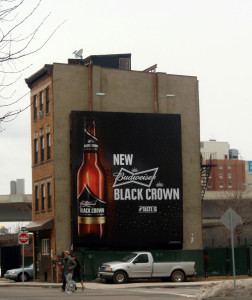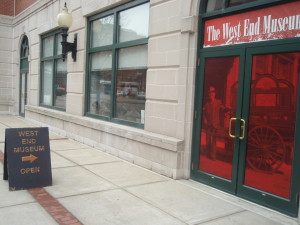Several years ago, I was managing the community engagement processes for the first stages of a large community renewal project in an Australian capital city. The State Minister wanted something to announce before Christmas and he wanted to tell this community of about 3000 public tenants (half of whom did not speak English and were mainly from refugee communities) that their neighborhood was going to be rebuilt. We sent four delegations to the Minister’s office, asking that the announcement be delayed until February. We failed and on 13 December, I faced a room full of over a hundred weeping tenants.
I will take that terrible experience to my grave.
And now I wish I’d defied protocol, taken myself to the Minster’s office and laid down the law. Within days, there were reports from the local chemist of a dramatic increase in prescriptions for anti-depressants and basically, everyone fell apart for weeks until we returned in mid-February and started all over again. From scratch. All the residents could remember from that first terrible meeting was that their lives were going to change irrevocably. Some (particularly those who had fled repressive regimes in Southeast Asia) expected to be made homeless immediately. Others did not trust the government in any form.
It took months to put right that one insensitive act.
And for what? A Minister’s career? He was sacked shortly afterwards. There have been perhaps nine Ministers of Housing in that State since that time.
What we know from evidence-based research (and this applies specially to low-income people and marginalised people with multiple disadvantages) is that people cannot quickly reconcile themselves to the loss of familiar attachments when told that it’s for the “common good”. It takes time – more time than planners ever allocate – for people to come to grips with such shocking information. They were in root shock: grieving for a lost home.
It’s been called “Root Shock”. Plants die of it and so do people.
The intense grief and sense of loss caused by such a major disruption to social and family ties may never heal. The grief may persist for decades.
I spent February living in Boston, teaching planning at Harvard. One weekend, my cousin took me on a long walk to the “50 acres of emptiness” that is now the West End to visit the West End Museum so I could see “Boston’s shame” for myself. See: https://thewestendmuseum.org/
Psychologist Marc Fried spent several years in the 1950s with West Enders researching the psychological effects of the forced dislocation of the whole of the West End’s multi-ethnic population as part of “urban renewal” from 1958 to 1960. In Boston, one of the country’s oldest cities, almost a third of the old city was demolished-including the historic West End to make way for a new highway, low- and moderate-income high-rises (which eventually became luxury housing), and new government and commercial buildings.
This came to be seen as a tragedy by many residents and urban planners. Me included. We studied it when I was a planning student. Now, not even the road pattern remains; it was completely reconfigured, as though the planners sought to wipe the memory of the West End from the map.
Only one original building is standing there.
More than 90 percent of those residents showed symptoms of depression. Fried concluded that cohesive neighborhoods provide residents with a feeling of rootedness that is essential in maintaining a sense of identity and purpose. The study also helped establish the notion that people can grieve for the loss of something other than a loved person.
As I shivered in the cold air outside the Museum, I struggled to breathe. I could hear the voices of the women – still crying. I could see them with their arms wrapped around themselves, rocking, keening”¦ Still grieving”¦
Half a century later”¦ I found it cold, windswept, drab, bare and I felt much, much more shock than I had expected – having read about this terrifying acts of violence as a planning student at Adelaide University in the early 1970s. Since physically it’s gone, for the displaced residents who are still living, the old West End is now only a “neighborhood of the mind”: a landscape of memory.
And inside the Museum, I was reduced to tears. What a tragedy!
* * *
I’m sitting at my desk watching a mother wallaby and tiny, hesitant small joey eating grass and resting in the last rays of the fading afternoon sun. In a moment, the kookaburras will start laughing in that tree across the valley. A distant brushcutter whines. Clouds are scudding in from the east, presaging rain. I’ll need a cardigan as soon as the sun slips behind the trees in the woodlot.
How would I feel? To be told that I would have to be torn from the core territory of my home – and all that it represents to me. I’m an animal, like the wallaby and her joey, who know where their territory is. I AM an animal and I’m hard-wired to protect my territory.
And believe me, it doesn’t matter if your name is not on the title. Tenants have “place attachment” too. I have felt as strongly about rental properties as I do about this one. My hopes and dreams live here with me. And the hopes and dreams of the residents of that small public housing estate lived there with them.
I hope that — as planning consultants — we did well – in the end – listening and responding to those precious dreams – and all that grief – and helping those gracious and fine people move into a new life.
But I wonder”¦ I wonder”¦ wonder I do”¦



The post war effort to provide modern living in high rise also produced ugly buildings which disrupted communities and resulted in demolition further down the time line.
I wonder if we have ever worked out not only the social cost of modernising communities but also the financial costs in terms of health issues, misspent public money, lack of social connection and respect, lack of understanding the basic living/ spatial needs of people for peaceful areas, green areas, socialable areas, usable private space and design that does not rely entirely on wires and pipes?
I totally ‘get’ your horror and disgust Wendy – the ‘cleansing’ of areas for the new rich will always cause battle scars unless the responsible governments feel responsible for their marginalised.
Apparently cities ‘shape-shift’ to suit the dominant class, and have done so since Hausmann.
Unlike post war reconstruction in Europe, where bomb sites was the only urban form left of the city, areas unaffected by war damage (most of Australia, mainland USA) had not the same imperative – only the imperative of family creation and commercial office space.With ‘white-flight’ to the suburbs, the inner city could stagnate – I understand parts of Redfern Waterloo in the late 50’s still had dwellings with no internal water taps. Thus ‘modernisation’ of these areas was seen at that time as a social good, as were slum clearances around waterfronts where plague pestilence and fire were frequent visitors.
But yes, the city is being reclaimed by the new gentry as the professional clases abandon the suburbs- it wasnt that long ago gangs roamed Woolloomooloo to ‘cleanse’ the area from vagrants so that new apartments could be ‘safe’ from Matthew Talbot’s finest. Gentrification at its finest.
I read recently that the City of London is experiencing all of what you speak of Wendy – low income inner city residents resenting ‘infill’ housing as it only makes the inner city unaffordable for existing occupants – owners and renters alike.